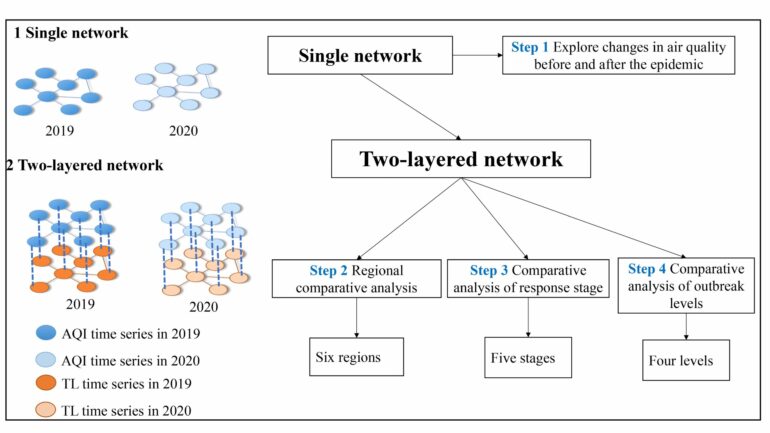The COVID-19 pandemic and its public response created large shifts in how people travel. In some areas, these restrictions on travel appear to have had little effect on air pollution, and some cities have worse air quality than ever.
In Chaos, researchers in China created a network model drawn from the traffic index and air quality index of 21 cities across six regions in their country to quantify how traffic emissions from one city affect another. They wanted to leverage data from COVID-19 lockdown procedures to better explain the relationship between traffic and air pollution and saw the COVID-19 lockdowns as a rare opportunity for research.
“Air pollution is a typical ‘commons governance’ issue,” said author Jingfang Fan. “The impact of the pandemic has led cities to implement different traffic restriction policies, one after another, which naturally forms a controlled experiment to reveal their relationship.”
To address these questions, they turned to a weighted climate network framework to model each city as a node using pre-pandemic data from 2019 and data from 2020. They added a two-layer network that incorporated different regions, lockdown stages, and outbreak levels.
Surrounding traffic conditions influenced air quality in Beijing-Tianjin-Hebei, the Chengdu-Chongqing Economic Circle, and central China after the outbreak. Pollution tended to peak in cities as they made initial progress for containing the virus.
During this time, pollution in Beijing-Tianjin-Hebei and central China lessened over time. Beijing-Tianjin-Hebei, however, saw another spike as control measures for outbound traffic from Wuhan and Hubei were lifted.
“Air pollution in big cities, such as Beijing and Shanghai, is more affected by other cities,” said author Saini Yang. “This is contrary to what we generally think, that air pollution in big cities is mainly caused by its own conditions, including the traffic congestion.”
Author Weiping Wang hopes the team’s work inspires other interdisciplinary teams to explore unique ways to explore problems in environmental science. They will look to improve their model with a higher degree of detail for traffic emissions.
“Our discovery is that in order to improve air pollution, it is not only necessary to improve and reduce our own urban traffic and increase green travel, but also need the joint efforts of surrounding cities,” said author Na Ying. “Everyone is important in the governance of commons.”
More information:
Network approach reveals the spatiotemporal influence of traffic to air pollution under the COVID-19, Chaos An Interdisciplinary Journal of Nonlinear Science (2022). aip.scitation.org/doi/full/10.1063/5.0087844
Provided by
American Institute of Physics
Citation:
COVID-19 lockdown measures affect air pollution from cities differently (2022, April 26)



